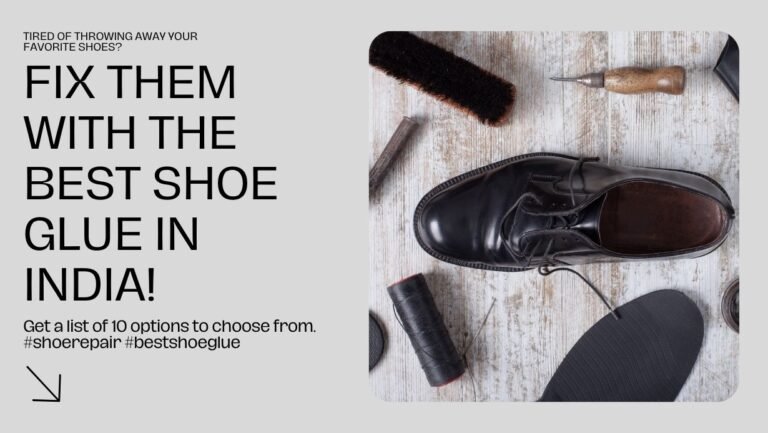Are your shoes causing you pain?
Plantar fasciitis is a common cause of heel and foot pain, and the type of shoe you wear can play a role in this condition.
In this article we’ll discuss what plantar fasciitis is, how shoes can be a factor, which types of shoes to avoid, which to use instead, and treatments that are available.
If you’re dealing with painful feet, read on to learn more about how your shoes may be contributing.
Key Takeaways
- Poorly fitting shoes, inadequate arch support, and lack of cushioning can all contribute to plantar fasciitis
- Ill-fitting shoes can strain muscles and ligaments, leading to pain and injury
- Inadequate arch support can cause stress on the plantar fascia, resulting in inflammation and pain
- Shoes without enough cushioning can lead to discomfort and conditions like plantar fasciitis
Overview of Plantar Fasciitis
Plantar fasciitis is a painful condition that affects the bottom of your foot. It’s caused by inflammation of the thick tissue running from your heel bone to your toes, called the plantar fascia.
Shoes with inadequate support and cushioning can contribute to this inflammation, as can improper foot anatomy or posture. Improperly fitted shoes can put extra strain on certain parts of the foot, leading to tissue inflammation and pain.
To avoid plantar fasciitis, look for a shoe that provides enough arch support and cushioning for your individual foot type.
The Role of Shoes in Plantar Fasciitis
Poorly fitting shoes, shoes with inadequate arch support, and those that don’t provide enough cushioning all play a role in plantar fasciitis.
You should be aware of these factors when selecting new shoes as they can influence the condition of your feet.
Make sure your sneakers fit correctly and provide adequate arch support and cushioning to protect you from potential injury or discomfort.
Poorly fitting shoes
Wearing shoes that don’t fit properly can lead to plantar fasciitis. Poorly fitting footwear, such as those that are too tight or too loose, can cause undue stress on the foot and heel, leading to inflammation of the plantar fascia.
This is often seen with shoes that don’t follow current trends in terms of size and shape. Ill-fitting shoes not only feel uncomfortable but also put extra strain on muscles and ligaments in your feet, which can lead to pain and injury over time.
To prevent this from happening, it’s important to make sure your footwear fits properly and follows up-to-date trends for optimal comfort and support.
Shoes with inadequate arch support
Inadequate arch support can lead to painful foot problems. Wearing shoes that do not provide the right amount of cushion for a person’s particular arch type can cause stress on the plantar fascia, leading to inflammation and pain. This pain can be severe and long-lasting if not addressed.
Properly supporting your feet with shoes tailored to an individual’s arch type is key in avoiding foot pain and other issues. It’s important to find footwear that fits well, provides adequate cushion, and matches an individual’s unique arch type in order to keep feet healthy and free from discomfort.
Shoes that don’t provide enough cushioning
Lack of sufficient cushioning in shoes can lead to painful foot conditions. Insufficient padding can result in an ill fitting heel and cause discomfort with every step.
Poorly cushioned soles can also lead to plantar fasciitis, a condition that results from straining the ligaments in the bottom of the feet.
Shoes without enough cushioning may be lightweight and stylish but they don’t provide enough support for your feet.
To avoid plantar fasciitis, look for shoes that offer adequate arch support and cushioning.
Types of Shoes to Avoid
Avoiding certain types of shoes can help prevent plantar fasciitis. For preventive measures, avoid wearing footwear with very thin soles or no cushioning, such as flip-flops and ballet flats. High heels should also be avoided because they put extra strain on the feet and cause them to slide forward in the shoe.
To reduce the risk of developing plantar fasciitis, make lifestyle changes like wearing supportive shoes with good arch support and cushioning.
Types of Shoes to Use
To help prevent plantar fasciitis, you should wear footwear that provides good arch support and cushioning. Look for sneakers with memory foam insoles, deep heel cups, and a thickly cushioned midsole to absorb shock.
If your feet pronate excessively (overpronation risk) or slip out of the back of the shoes (heel slippage), consider a pair of motion control shoes with an extra-sturdy sole.
For even more support, add custom orthotics to any type of shoe you choose.
Treatment for Plantar Fasciitis
If you’re suffering from plantar fasciitis, you’ll want to look into treatments that can help reduce your pain and improve your mobility. The condition is caused by genetic factors as well as lifestyle habits so it’s important to take steps to address both.
For example, stretching the calf muscles and wearing supportive shoes can help relieve pain. Strengthening exercises and deep tissue massages may also be beneficial in reducing inflammation and restoring flexibility. Surgery is sometimes recommended if other treatments do not provide relief.
Take the time to research all possible options for treating plantar fasciitis before deciding on a course of action.
Frequently Asked Questions
What are the symptoms of plantar fasciitis?
If you’re wearing socks, stretching your foot, and feeling sharp pains in the heel or arch area, it may be plantar fasciitis. Other symptoms include tenderness when walking, difficulty standing on tiptoes, and heel swelling. Seek medical attention if pain persists.
What other factors can cause plantar fasciitis?
You may experience plantar fasciitis if you are not stretching properly, or if you are overworking your feet without restorative exercises. To avoid this condition, ensure that you give your feet adequate time to recover and perform the proper stretches.
How can I prevent plantar fasciitis?
To prevent plantar fasciitis, do daily stretching exercises and wear appropriate footwear. This will help keep your feet flexible and strong. Additionally, be sure to give your feet a break from strenuous activities when possible.
Are there any home remedies for plantar fasciitis?
You can try stretching exercises and ice therapy for relief from plantar fasciitis. Stretching will help reduce tension, while ice therapy will reduce inflammation and pain. Take it easy and give your feet time to heal.
Are there any surgeries available to treat plantar fasciitis?
Yes, there are surgeries available to treat plantar fasciitis. However, many people opt for non-surgical treatments such as stretching exercises and physical therapy. These can help relieve the pain associated with plantar fasciitis and improve mobility without surgical intervention.
Conclusion
You can prevent and treat plantar fasciitis by making sure you wear the right type of shoes. Avoid shoes that are too tight, lack support, or have a heel that’s too high. Instead, opt for shoes with good arch support and cushioning to help absorb shock.
If you’re already suffering from plantar fasciitis, talk to your doctor about the best treatment options for you. With the right combination of rest, exercise, stretching, and supportive footwear, you can get back on your feet in no time!







